“I am dying and I will live”: the legendary partisans of Transcarpathia
- a modern view of the village of Yasinya, the birthplace of Oleksa Borkanyuk
Oleksa O. Borkanyuk was born on January 16 1901 in the village of Yasinya in a large Hutsul family. Now Yasinya is part of the Rakhiv district of the Transcarpathian region of Ukraine. Beautiful mountainous places inhabited by Hutsuls are part of the Ruthenian people. Oleksa's father was a lumberjack and his son helped the head of the family from childhood, working on logging. But, despite its simple origin, Oleksa showed remarkable intellectual abilities. He managed to take an external course in a four-year course at a city school, after which he entered and completed a two-year course at a trade school in Mukachevo, one of the largest and oldest urban centers in Transcarpathia. After graduating from the trade school, Oleksa left for Uzhgorod, where he entered the local trade academy. From a young age, Borkanyuk became interested in the social and political problems of his native land. In those years, the pro-Russian views of the Rusyns often took the form of sympathy for the Soviet Union, from which many turned to communist convictions. In 1924, he joined the Communist Youth Organization and Oleksa Borkanyuk, and in 1925, he became a member of the Czechoslovak Communist Party. The party in those years advocated the accession of Transcarpathia to the Ukrainian SSR, which, according to the Czechoslovak Communists, corresponded to the true needs of the population of Transcarpathia.
Subcarpathian Rus
Transcarpathia is a region with special specifics and a difficult historical fate. Today it belongs to Western Ukraine, but not so long ago the lands of Transcarpathia were called Subcarpathian Rus, and its inhabitants - not only as the Carpathians, or simply the Ruthenians. Up to the twentieth century, pro-Russian sentiments were traditionally strong in Subcarpathian Rus. In fact, the majority of the locals felt themselves to be part of the great Russian people, even the ethnonym “Rusyns” and the self-name of the local language, “Ruthenian”, left no doubt as to the identification of Transcarpathians. Meanwhile, politically, the Transcarpathian region broke away from the Russian world in the Middle Ages, and developed for a long time separately, moving from one Eastern European state to another.
The lands of the Galicia-Volyn principality - the historical land of the Russians - after its weakening were divided between Poland, the Hungarian Kingdom and the Grand Duchy of Lithuania. Later they became part of the Commonwealth, and then, after its division and until the end of the First World War, belonged to Austria-Hungary. First, the Polish, and then the Austro-Hungarian rulers tried to destroy any pro-Russian sentiments on the territory of Transcarpathia that they ruled. Catholicism and Uniatism were imposed on the local population, Orthodox were subjected to discrimination. In parallel with the repressive measures from the end of the 19th century, the Austro-Hungarian authorities were pushing hard among the people of Galicia and Subcarpathian Rus the construct of “Ukrainian identity” as opposed to the concept of the trinity of the Russian nation (Great Russians, Little Russians, Belorussians). After the end of the First World War, in which Austria-Hungary was defeated, the empire created by the Habsburgs ceased to exist. On its fragments appeared a number of nation states - Austria, Hungary, Poland, Czechoslovakia, Yugoslavia. It was planned to create a Ukrainian state on the territory of the Galician lands, which were formerly part of Austria-Hungary.
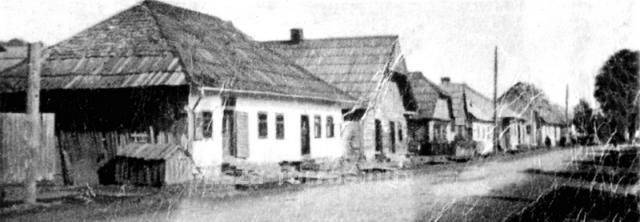
The period of the collapse of the Austro-Hungarian state gave many leaders of the Ruthenian movement in Transcarpathia hope for long-awaited self-determination. However, the positions of local political activists on the future of the Transcarpathian region are divided. Thus, a part of Rusyn politicians insisted on the entry of Transcarpathia into the newly formed Czechoslovakia, given the linguistic and cultural proximity to the Slavs Czechs and Slovaks. Naturally, an impressive part of Ruthenian activists adhered to the idea of joining Ukraine. Finally, among the Rusyns were supporters of the entry into the structure of Hungary, Russia, and complete independence. Prominent figures of Ruthenian emigration gathered in Scranton. The majority of Ruthenian activists (67%) voted for the incorporation of Transcarpathia into Czechoslovakia, 28% spoke in favor of unification with Ukraine, 2% for independence of Subcarpathian Russia, 1% for unification with Galicia, minor groups for joining Hungary or Russia . In the Transcarpathian region, there were also heated debates among local political activists on the future of the region. In Uzhgorod, the National Assembly convened voted to become part of Hungary in the status of an autonomous region. In Khust, the national assembly voted for unification with Ukraine, and the Rada of Galician and Ugric Rusyns gathered in Presov, which supported the idea of American Rusyns about joining Czechoslovakia.
Borkanyuk - the leader of the Communists of Czechoslovak Transcarpathia
At the beginning of 1919, units of the Czechoslovak army entered the territory of Transcarpathia. 8 May 1919. Transcarpathian political leaders Grigory Zhatkovich, Anton Beskid and Avgustin Voloshin gathered in Uzhgorod and decided to join Czechoslovakia. Nevertheless, the desire of the inhabitants of Subcarpathian Rus to join Czechoslovakia was apprehensively met by the Czechoslovak leaders themselves. Despite the fact that Czechoslovakia brought its troops into the region, Prague discussed the question of what to do with the territory of Transcarpathia in the event of its joining the country. After all, emissaries sent by the Czechoslovak government reported to Prague about the hopeless backwardness of Transcarpathia and its uselessness for Czechoslovakia in economic terms. In the end, the Czechoslovak leaders decided to refuse Subcarpathian Rus to petition for its acceptance into Czechoslovakia, and only pressure from the Entente countries forced Prague to meet Transcarpathian leaders. The British and French were afraid that in the event of the refusal of Czechoslovakia to include Sub-Carpathian Rus into its structure, the latter would become part of Hungary, to which the Entente continued to treat with distrust. 10 September 1919 Podkarpatska Rus in the status of autonomy became part of Czechoslovakia.
Despite the fact that Czechoslovakia was one of the most economically and culturally developed countries in Eastern Europe, Transcarpathia remained the most backward region of the country, in which modern industry practically did not develop. Agriculture was also conducted by backward methods, and the situation was aggravated by the fact that most of the land was in the hands of large landowners. Unemployment progressed in the region, the standard of living of the population remained extremely low, which contributed to the growth of protest sentiments in Transcarpathian cities and villages. Among the population of Transcarpathia were active cells of the Communist Party of Czechoslovakia. Periodically, under the leadership of the communists, workers and peasants speeded up. In December, 1935 in Chynadiyevo and Svalyava broke out in strikes, during which Ruthenian and Hungarian workers came together to fight for their economic rights. Oleksa Borkanyuk, a young but experienced Communist Party activist, led them. In the thirties of the twentieth century, Czechoslovakia favorably differed from most other countries of Eastern Europe. If in Hungary, Romania, Poland, Bulgaria there were authoritarian regimes that suppressed any opposition actions, then Czechoslovakia could be called the model democracy of Eastern Europe. Not only did a multi-party system operate here, but the Communist Party of Czechoslovakia also had the possibility of legal political activity, including participation in parliamentary elections.
In 1935, the Czechoslovak Communist Party won more than 40% of the votes in the parliamentary elections in Subcarpathian Russia. The local population supported the Communists for at least two reasons: first, in the eyes of the pro-Russian part of the Ruthenians, the Communists personified the Soviet Union, that is, Russia, and secondly, the socio-economic backwardness of the region, poverty and unemployment contributed to the growth of sympathy for social justice slogans . Among the deputies who passed to the Czechoslovak parliament from Subcarpathian Rus was Olexa Borkanyuk.
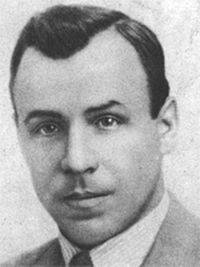 By this time, the thirty-four-year-old activist of the communist movement had been leading the Transcarpathian Regional Committee of the Communist Party of Czechoslovakia for a year. Behind him was studying at the Artem Communist Academy in Kharkov, where Borkanyuk illegally made his way into 1926 and where he stayed until 1929. At the Communist Academy, Oleksa studied journalism and after graduating from the Academy became the first certified journalist in the Transcarpathian region. At the beginning of 1929, he joined the VKP (b), and upon his return to Transcarpathia, he became the first secretary of the local communist youth organization. As a journalist, Oleksa Borkanyuk headed the local newspapers - Pratsyuyucha Molod (Working Youth), Karpatska Pravda (Karpatskaya Pravda). Becoming a deputy of the Czechoslovak parliament, Borkanyuk repeatedly tried to draw public attention to the threat of Nazism, which had triumphed in Germany and directly threatened Czechoslovakia’s political sovereignty. He tried to "break through" Borkanyuk and financing the development of social infrastructure in Subcarpathian Rus. As a communist, Borkanyuk, of course, was forced to adhere to the official concept of "Ukrainians", which was shared by the leaders of the Ukrainian SSR and the USSR. However, his Russophile sympathies are beyond doubt. Thus, in one of his articles, the leader of the Transcarpathian Communists wrote: “We stand for the fact that schools taught Russian as an obligatory subject. We want our young people, our people to become familiar with the culture of the largest and most democratic Slavic people, so that the fraternal union between the Ukrainian, Russian and other Slavic peoples will be strengthened. ”
By this time, the thirty-four-year-old activist of the communist movement had been leading the Transcarpathian Regional Committee of the Communist Party of Czechoslovakia for a year. Behind him was studying at the Artem Communist Academy in Kharkov, where Borkanyuk illegally made his way into 1926 and where he stayed until 1929. At the Communist Academy, Oleksa studied journalism and after graduating from the Academy became the first certified journalist in the Transcarpathian region. At the beginning of 1929, he joined the VKP (b), and upon his return to Transcarpathia, he became the first secretary of the local communist youth organization. As a journalist, Oleksa Borkanyuk headed the local newspapers - Pratsyuyucha Molod (Working Youth), Karpatska Pravda (Karpatskaya Pravda). Becoming a deputy of the Czechoslovak parliament, Borkanyuk repeatedly tried to draw public attention to the threat of Nazism, which had triumphed in Germany and directly threatened Czechoslovakia’s political sovereignty. He tried to "break through" Borkanyuk and financing the development of social infrastructure in Subcarpathian Rus. As a communist, Borkanyuk, of course, was forced to adhere to the official concept of "Ukrainians", which was shared by the leaders of the Ukrainian SSR and the USSR. However, his Russophile sympathies are beyond doubt. Thus, in one of his articles, the leader of the Transcarpathian Communists wrote: “We stand for the fact that schools taught Russian as an obligatory subject. We want our young people, our people to become familiar with the culture of the largest and most democratic Slavic people, so that the fraternal union between the Ukrainian, Russian and other Slavic peoples will be strengthened. ” Subcarpathian Rus between Czechoslovakia and Hungary
However, in addition to the Communists, in Transcarpathia, right-wing radical organizations focused on Germany and Italy also enjoyed considerable influence. Among the Ruthenian right there were two main areas - Russophiles and Ukrainophiles. The Rusofil Russian National Autonomous Party focused on Italian fascism and advocated the autonomous development of Subcarpathian Rus as part of Hungary or Czechoslovakia. The Ukrainophiles were led by the famous Ukrainian nationalist, Archpriest Avgustin Voloshin, who also advocated autonomy. Naturally, the Hungarian population of the region sought to incorporate it into Hungary, the Slovakian wanted to preserve the autonomous status of Czechoslovakia, and the Communists supported joining Soviet Ukraine. 13 September 1938, a group of Ruthenian political figures led by Alexey Gerovsky brought a memorandum on the provision of autonomy to Carpathian Rus to the Prime Minister of Czechoslovakia Milan Goge. October 11 1938 city autonomy was granted to the region, and its government was headed by Andrey Brody. On October 19, at a meeting of the Government of Subcarpathian Rus, the discussion began on the issue of joining Hungary, after which, five days later, Prime Minister Brody was arrested by Czechoslovak counterintelligence. As head of government, he was replaced by Avgustin Voloshin, after which Subcarpathian Rus received a new name - Carpathian Ukraine, since Voloshin was a longtime supporter of Ukrainian identity and supported the unity of Transcarpathian Rusyns and Galicians in the framework of a single concept of the Ukrainian nation. Voloshin, counting on the help of Germany, dreamed of creating an independent Ukrainian state.
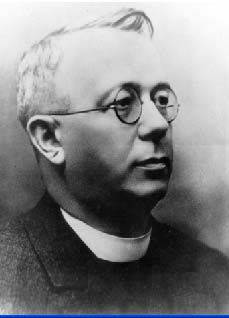
Meanwhile, Hungary was long thought about joining Transcarpathia to its territory. Miklos Horthy, who was at the head of the Hungarian state, was in allied relations with Germany, so Adolf Hitler preferred not to quarrel with Budapest, whose help he counted on in planned military conflicts. In accordance with the plans for the partition of Czechoslovakia, Eastern Slovakia and the Carpathian Ukraine were to become part of Hungary. 20 November 1938. Units of the Hungarian army entered the southern districts of Transcarpathia. At the same time, on the territory of the Carpathian Ukraine, a paramilitary organization of the fascist type was created - the Carpathian Sich, headed by Dmitry Klimpush. Sich started repression against the pro-Russian part of the Rusyns. In the elections to the Karpatoukras Seym held on February 12 1939, only one party participated - the Party of Ukrainian Unity.
The fact that the Hungarians are preparing an invasion of Transcarpathia, of course, knew the Czechoslovak intelligence. January 6 1939 arrived in Khust by General Lev Prhal, who was appointed by the President of Czechoslovakia as Minister of the Interior of Carpathian Ukraine. Avgustin Voloshin accepted the general, but refused to cooperate. In response, Prague dismissed a member of the government of Czechoslovakia, a representative of Transcarpathia, Julian Reva. Meanwhile, the Hungarians concentrated on the border with Czechoslovakia 12 divisions of the Sixth Army and on the night from 13 to 14 in March began advancing into the territory of Carpathian Ukraine. On the same night, two thousand fighters of the Carpathian Sich, on the orders of Augustin Voloshin, took an 41 rifle and 90 pistols from the warehouses of the gendarmerie of the city of Khust. The self-rule of the Sichs caused a sharply negative reaction from the Czechoslovak command. At four o'clock in the morning, the Czech general demanded that the commandant of the Sich Ivan Roman hand over their weapons. The Sich refused and the Czechoslovak detachment of 200 soldiers and officers, about six o'clock in the morning, attacked the headquarters of the Sich. Armed clashes between the Sich and Czechoslovakians throughout Khust began. In the end, Augustine Voloshin managed to negotiate with General Lev Prhaloy, after which a truce was established. By this time, the Czechoslovakians had lost from 7 to 20 servicemen killed, and the Suechev - to 150 people killed and 50 wounded. In the face of Hungarian aggression, General Lev Prhal, after a telephone conversation with the government of Czechoslovakia, ordered the withdrawal of Czechoslovak troops from the territory of the Carpathian Ukraine. Hungarians entering the territory of the Carpathian Ukraine began to suppress the resistance of the Sich. In this the Hungarians were actively helped by the Poles, who had their own accounts for the Ukrainian nationalists.
Transcarpathian "Ukrainians" by Avgustin Voloshin
After the 14 of March 1939 was proclaimed independence of Slovakia, where the pro-Hitler regime was in power, the Carpathian Ukraine declared its political independence on March 15. Karpatoukraim Sojm (Sejm) decided to proclaim the country a republic, at the head of which became the president elected by the Soym. The flag of the Carpathian Ukraine was approved — a blue-and-yellow cloth, and a coat of arms — the trident of Prince Vladimir. The song “Ukraine has not yet died” became the anthem of the newly formed country. Soym elected Avgustin Voloshin as president of the Carpathian Ukraine, Avgustin Stefan as chairman of the soym, and Julian Reva as chairman of the government. The leaders of Carpathian Ukraine planned to create a state on the model of neighboring Slovakia, with a right-wing anti-communist regime. Naturally, the Ukrainian nationalists sought by any means to minimize the pro-Russian sentiment among the Ruthenians and establish the Ukrainian identity. For the supporters of Russophilism, a special concentration camp “Dumen” was created, where pro-Russian citizens were placed without any trial or investigation. The Voloshin regime relied not so much on the local Ruthenian population as on the reinforcements arriving from Galicia — members of the Organization of Ukrainian Nationalists (OUN).
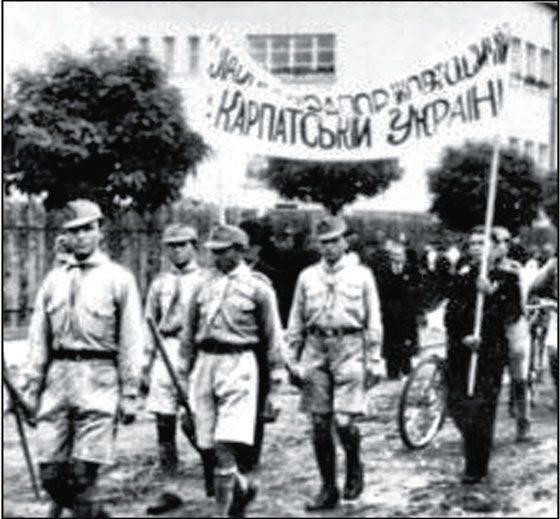
Voloshin himself turned to Adolf Hitler with a request to transfer the Carpathian Ukraine under the protectorate of Germany. However, the Führer did not consider it necessary to satisfy the request of the Ukrainian nationalists - he did not want to spoil relations with Horthy, who claimed to Transcarpathia, since Hungary seemed to be a much more solid ally than the doubtful Galician nationalists. The German leadership recommended Voloshin not to resist the Hungarian troops and peacefully enter Hungary. On March 16, the government of Carpathian Ukraine left Khust and headed towards the Romanian border. Detachments of the Carpathian Sich tried to resist the Hungarians. The most difficult was the battle for Hust. In this battle, the 230 of the Sich and 160 of the Hungarian soldiers died. The 24 frontier battalion and the 12 th scooter battalion were thrown against the Sich. The Hungarians forced the Sich to leave Hust. The next day, the Hungarian troops took Rakhiv, Bushtovo and Yasinya.
"Madjarization" of Transcarpathia
By 18 March 1939, the Hungarian troops occupied almost the entire territory of Transcarpathia. On March 21, the last units of the Czechoslovak army and employees of the Czechoslovak administration left the territory of Transcarpathia. Hungarian troops entered Transcarpathia. Ukrainian nationalists from the Carpathian Sich tried to resist the Hungarians, but could not resist the regular army and were forced into the border areas of Romania and Slovakia. The total losses of the fighters of the Carpathian Sich amounted to at least 430 people killed, 400 wounded, and the Hungarian army - 197 people killed and 534 wounded. At the same time a large number of Ukrainian nationalists died during the sweeps, which were carried out not only by the soldiers of the Hungarian army, but also by local Magyars, armed and enrolled in the militia. Augustine Voloshin, who fled through Romania to Yugoslavia, and then to Prague, settled in the Czech capital. He became the rector of the Ukrainian Free University, which existed in Prague occupied by Nazi troops.
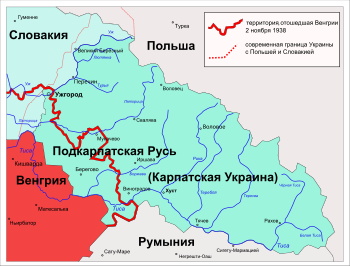 In the occupied Transcarpathian region, the Hungarians began to establish their own rules, based on discrimination of the Slavic population and privileges for the tribesmen who inhabited vast Magyar speaking areas. The territory of Transcarpathia was administratively divided into three exhibits - Uzhansk, Berezhskaya and Maramorosh. Hungarian was established as the official language in all exhibits. In the village of Kryva, in the outskirts of Khust, as well as in Chynadiyevo, Turii Remety, Perechin, concentration camps were established, which sent all the locals suspected of dissatisfaction with the new regime. Particularly dangerous from the point of view of the Hungarian authorities, the opposition was sent to prisons in Budapest. The Rusyn population of the region was under the vigilant supervision of the police and gendarmerie. Numerous units of the Hungarian gendarmerie were transferred to the Transcarpathian region, and counterintelligence was reinforced. About two thousand people only on suspicion of political unreliability were dismissed from their jobs. Unemployment in the region under the Hungarian government only worsened, the standard of living of the population due to inflation fell, and the peasants were obliged to supply agricultural products free of charge - for the needs of the Hungarian army. For “localization” of the local population, the Hungarian administration created the youth organization Levente, which was responsible for promoting Hungarian values among the young Transcarpathians. However, the latter were by no means eager to learn the difficult Hungarian language and, especially, to perceive the personality cult of Miklos Horthy and the ideology of the “Great Hungary”.
In the occupied Transcarpathian region, the Hungarians began to establish their own rules, based on discrimination of the Slavic population and privileges for the tribesmen who inhabited vast Magyar speaking areas. The territory of Transcarpathia was administratively divided into three exhibits - Uzhansk, Berezhskaya and Maramorosh. Hungarian was established as the official language in all exhibits. In the village of Kryva, in the outskirts of Khust, as well as in Chynadiyevo, Turii Remety, Perechin, concentration camps were established, which sent all the locals suspected of dissatisfaction with the new regime. Particularly dangerous from the point of view of the Hungarian authorities, the opposition was sent to prisons in Budapest. The Rusyn population of the region was under the vigilant supervision of the police and gendarmerie. Numerous units of the Hungarian gendarmerie were transferred to the Transcarpathian region, and counterintelligence was reinforced. About two thousand people only on suspicion of political unreliability were dismissed from their jobs. Unemployment in the region under the Hungarian government only worsened, the standard of living of the population due to inflation fell, and the peasants were obliged to supply agricultural products free of charge - for the needs of the Hungarian army. For “localization” of the local population, the Hungarian administration created the youth organization Levente, which was responsible for promoting Hungarian values among the young Transcarpathians. However, the latter were by no means eager to learn the difficult Hungarian language and, especially, to perceive the personality cult of Miklos Horthy and the ideology of the “Great Hungary”. Intelligence comrade Oleksy
The Czechoslovak Communist Party, even before the Hungarians seized Transcarpathia, went underground. Staying in Transcarpathia captured by Hungary was dangerous. The leadership of the Communist Party of Czechoslovakia decided to remove Oleks Borkanyuk from the hortic counterintelligence strike, because the deputy of the federal parliament knew everything and it was very difficult for him to hide in the region seized by the Hungarian fascists. Sooner or later there would be a traitor who would give the location of the communist to the Hungarian counterintelligence. Therefore, in March, 1939 Oleksa Borkanyuk, who was hiding in Khust with an old acquaintance - a shoemaker, received an order from the Central Committee of the Czechoslovak Communist Party - to hand over the authority to a member of the regional committee Iosif Havelka and leave for the Transcarpathian region. Oleksa Borkanyuk 14 March 1939 moved to the Soviet Union. Here he was engaged in work in the Central Committee of the International Organization of Assistance to the Fighters of the Revolution. When the Great Patriotic War began, Borkanyuk decided to volunteer for the Red Army. But the party leader did not belong to himself - he was subordinate to party discipline, and the leadership of the CPSU (b) and the CPC decided to send an experienced revolutionary to organize a partisan movement in Transcarpathia. He completed a course of relevant military training, after which he formed the first reconnaissance group, which was to be abandoned in Transcarpathia.
The reconnaissance group, in addition to its commander Oleksa Borkanyuk, included exclusively verified comrades - representatives of the main nationalities of the region. They were Mikhail Mazhorovich Rusin, instructor of the Transcarpathian Regional Committee of the Communist Party of Czechoslovakia, Samuel Gaberman, a Jew who showed himself well in party work in the city of Mukachevo, Hungarians Gyula Kevago, who worked as a turner in Komarovo and escaped from the prison of the hortista, and Jézef Dekan, a former soldier in the International Brigade, who had escaped from the prison in Hortus, and Jézef Dekan, a former soldier in the International Brigade, who had escaped from the prison in Hortus, and Jézef Dekan, a former soldier in the International Brigade . The radio operator of the reconnaissance group was Muscovite Vitaly Rozovsky - an engineer from the Soviet capital who volunteered to go to Transcarpathia. Klement Gotvald himself, the leader of the Czechoslovak Communist Party, gave the last parting words to the small reconnaissance detachment. Before the departure to Transcarpathia, the detachment underwent an accelerated special training course - the program included parachuting, shooting from the main types of weapons, and explosive bombing.
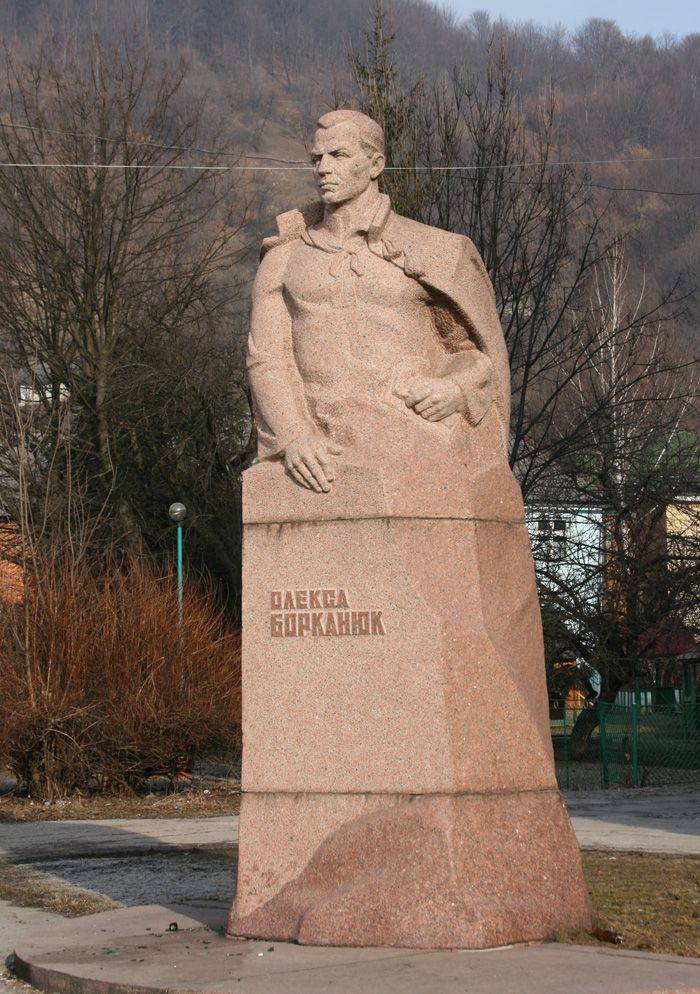
In early January, 1942, a reconnaissance team under the command of Oleksa Borkanyuk, landed in the area of the village of Yasinya, where the fearless leader of Transcarpathian communists spent their childhood. However, the landing was poorly prepared. Hungarian soldiers spotted the paratroopers and hurried to the detention. In a shootout, three parachutists died. Jozsef Dekan and Vitaly Rozovsky the Hungarians seized, later both heroes were shot. Only Oleksa Borkanyuk managed to escape from the environment. While the Hungarian command was looking for the commander of the reconnaissance group, appointing a large reward for his head, he contacted his brother Vasily Borkanyuk and established contacts with local underground workers. An underground organization was created which, under the leadership of Borkanyuk, studied the locations of Hungarian units, counting the number of trains leaving for the east - to the Soviet Union. Borkanyuk determined how the protection of railways and communications was organized. Olexa hoped to create a large partisan detachment of scattered underground groups operating throughout the territory of Transcarpathia. However, the plans of the heroic underground worker did not come true.
12 February 1942, the Hungarian counterintelligence got on the trail of Oleksa Borkanyuk. First, the gendarmes visited his brother, Vasily Borkanyuk, 60 years old. For two days the Hungarian fascists tortured a middle-aged man who provided Oleks with all-round assistance in underground activities. Brother was silent. Then the fascists came with a search to the house of another brother Oleksy - the late Dmitry. His widow and children lived in the house. It was there, in the forest house, that Olexa himself was hiding. When the Hungarian gendarmes attacked the woman and children and began to beat them cruelly, Oleksa had no choice but to leave the shelter. In addition to Oleksa, they arrested his brother Vasil Borkanyuk, his nephew Ivan, the widow of his brother Yavdokha, his juvenile nephews - fifteen-year-old Yurk and nine-year-old Vasilka. After seven months, only Yurok and Vasilek returned to their native village Yasinya. After the hell of the Hungarian torture chambers, they were already disabled and soon died. All the other relatives of Oleksa were killed in the dungeons of the hortist regime.
Oleksa Borkanyuk himself spent a long time in the prisons of Uzhgorod and Mukachevo, and then was transferred to Budapest, to the infamous Margit Ketur prison. Here cruel torture was used on the prisoners, but Oleksa did not lose his morale - moreover, he tried to rally the rest of the prisoners around him. Oleksa Borkanyuk spent eight months in a prison in Budapest. His fate was sealed. At the trial of Olex Borkanyuk held firmly and courageously pronounced the verdict. October 3 1942, Oleksa Borkanyuk was executed in the courtyard of the Budapest prison. Before his death, he cried out: “You will kill me, but the idea of communism never. Down with Hortia's Hungary! Long live the Soviet Union! ” After the war, the last letters of Oleksa Borkanyuk to the family were published. Saying goodbye to my family, the hero of the Transcarpathian underground wrote: “A military court sentenced me to death. I write these lines a few minutes before I die. I feel healthy, full of energy, unlimited desire to live. And there is no salvation. Forced to die. But I am going to die boldly, courageously, as it is the people of our warehouse. I lived 41 year, of which 20 years devoted to the cause of the poor people. All his life he was an honest, devoted, tireless fighter without personal self-interest. Never twisted soul. And so I die, because I know that our cause is just and victory will be ours. People will not forget me when the best time comes. Someday the story will tell the truth about my humble person ... I am dying and I will live. ” (Quoted from: Letters of the head of the underground in Transcarpathia Oleksy Borkanyuk 24 September and 3 October 1942 g. Http://http://www.molodguard.ru/heroes57-10.htm).
After the war, in 1945, the dust of Oleksa Borkanyuk was transported to Rakhiv. Subsequently, monuments to Oleksa Borkanyuk were erected in Rakhiv and Yasinyi. Twenty years after the Great Victory, 8 May 1965, the Presidium of the Supreme Soviet of the USSR awarded Alexei Alekseevich Borkanyuk for special merit, courage and heroism shown in the struggle against the Nazi invaders during the Great Patriotic War posthumous title of Hero of the Soviet Union.
Eternal memory to the partisans of Transcarpathia
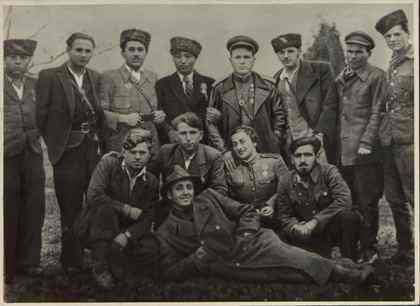 Oleksa Borkanyuk was right. With his physical death, the Transcarpathian resistance to the Hungarian and German fascists did not stop. Guerrilla warfare in Transcarpathia continued until the liberation of the region by units of the Red Army. In 1943, in the vicinity of Khust and Vinogradov, the Zakarpattsi parachute group, commanded by Hungarian Ferenc Pataki, was landed. The group included Stepan and Vasily Chizhmar, Mikhail Dyakun, Stepan Lizanets, Ivan Logu, Vaclav Zemper. Paratroopers contacted local residents who were sympathetic to the struggle of the Soviet Union, and began to gather intelligence information about the Hungarian fascists. By the end of February, 1944, more than 250 residents of Transcarpathia were involved in the orbit of the activities of the Ferenc Pataki group. But in the spring of 1944, the Hungarian counterintelligence was able to get on the trail of the partisans. Mass arrests began. 18019 April 1944 was a closed trial in the Hust Partisan case in Maramorosh-Sziget. The Hungarian tribunal sentenced to death 33 a man who was shot on April 25 in Maramorosh-Sziget and June 17 in Khust, Vinogradov, Tekovo and Chernotisov. In Budapest, the leader of the underground fighters Ferenc Pataki, who was also sentenced to death, was captured. However, the defeat of the Transcarpathian group could no longer prevent the liberation of the region.
Oleksa Borkanyuk was right. With his physical death, the Transcarpathian resistance to the Hungarian and German fascists did not stop. Guerrilla warfare in Transcarpathia continued until the liberation of the region by units of the Red Army. In 1943, in the vicinity of Khust and Vinogradov, the Zakarpattsi parachute group, commanded by Hungarian Ferenc Pataki, was landed. The group included Stepan and Vasily Chizhmar, Mikhail Dyakun, Stepan Lizanets, Ivan Logu, Vaclav Zemper. Paratroopers contacted local residents who were sympathetic to the struggle of the Soviet Union, and began to gather intelligence information about the Hungarian fascists. By the end of February, 1944, more than 250 residents of Transcarpathia were involved in the orbit of the activities of the Ferenc Pataki group. But in the spring of 1944, the Hungarian counterintelligence was able to get on the trail of the partisans. Mass arrests began. 18019 April 1944 was a closed trial in the Hust Partisan case in Maramorosh-Sziget. The Hungarian tribunal sentenced to death 33 a man who was shot on April 25 in Maramorosh-Sziget and June 17 in Khust, Vinogradov, Tekovo and Chernotisov. In Budapest, the leader of the underground fighters Ferenc Pataki, who was also sentenced to death, was captured. However, the defeat of the Transcarpathian group could no longer prevent the liberation of the region. 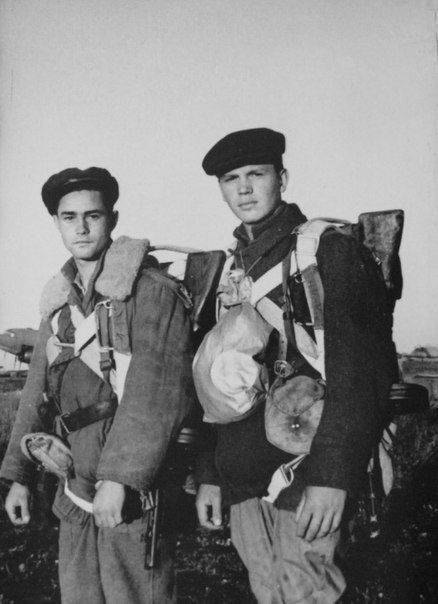
In July, a group under the command of Alexander Tkanko landed in 1944 in Transcarpathia, expanding its activities to the Velikiye Chechen and Perechin districts. The local population, who was tired of the arbitrariness of the Hungarian authorities, provided the partisans with all-round assistance. By the time of liberation of Transcarpathia, the number of the partisan detachment of Alexander Tkanko had grown to 800 people. In August 1944 g. In with. Bereguifalu, in the vicinity of Beregovo, was landed by a detachment staffed by the Hungarians, under the command of Gyula Usti. Then parachute groups of Ivan Prishchepy landed, in the Khust-Ya. Vanyagin area, in the area of the Shalanky village in the vicinity of Vinogradov, I. Captain's detachment. The detachments under the command of Ivan Prischepy and Dula Usti united in one guerrilla unit named after Ferenc Rakoczy, numbering two hundred and fifty people. For two months, the detachment spent at least two dozen reconnaissance and sabotage operations. In the area of Mukachevo and Svalyava there was another large partisan detachment under the command of Vasily Rusin, chief of staff Ivan Stender and commissioner Ivan Fabrizia. The number of detachment was 250 fighters-partisans and 200 activists - underground fighters and volunteers. The Rusin squad covered two cities and fourteen villages in Transcarpathia with their activities. The partisans of Rusin placed under control a section of the railway and a highway linking Volovets and Mukachevo. Because of this, they were able to prevent the transportation of fascist troops in Transcarpathia. The guerrillas blew up ammunition depots of the German and Hungarian army, destroyed automotive vehicles, and disrupted communications.
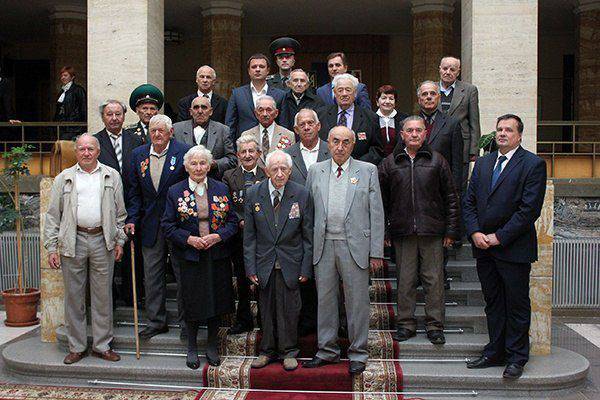
The overall coordination of the activities of the partisan detachments in the Transcarpathian region was carried out by the Ukrainian headquarters of the partisan movement. Having acquired organized forms and a centralized system of leadership, the Transcarpathian guerrilla movement turned the region into a field of constant combat attacks against Hungarian fascists. The total number of partisan units that fought against the enemy in Transcarpathia reached 1700 people, and all in all, 2800 people were involved in the orbit of underground and partisan activities in the region - people of different ages, genders, nationality, and social status. Many of the Transcarpathians died heroically in battles with the Nazis or were shot and hanged in Hungarian torture chambers. Therefore, Transcarpathians even today, in a difficult political situation, have a special attitude to the memory of the partisans - the heroes of the liberation of Transcarpathia.
Materials used: www.yasinya.com, waralbum.ru.
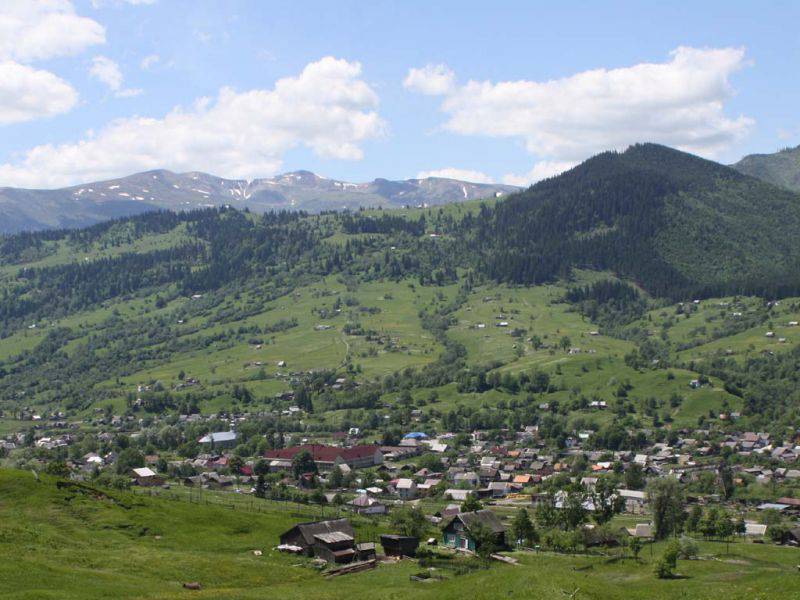
Information